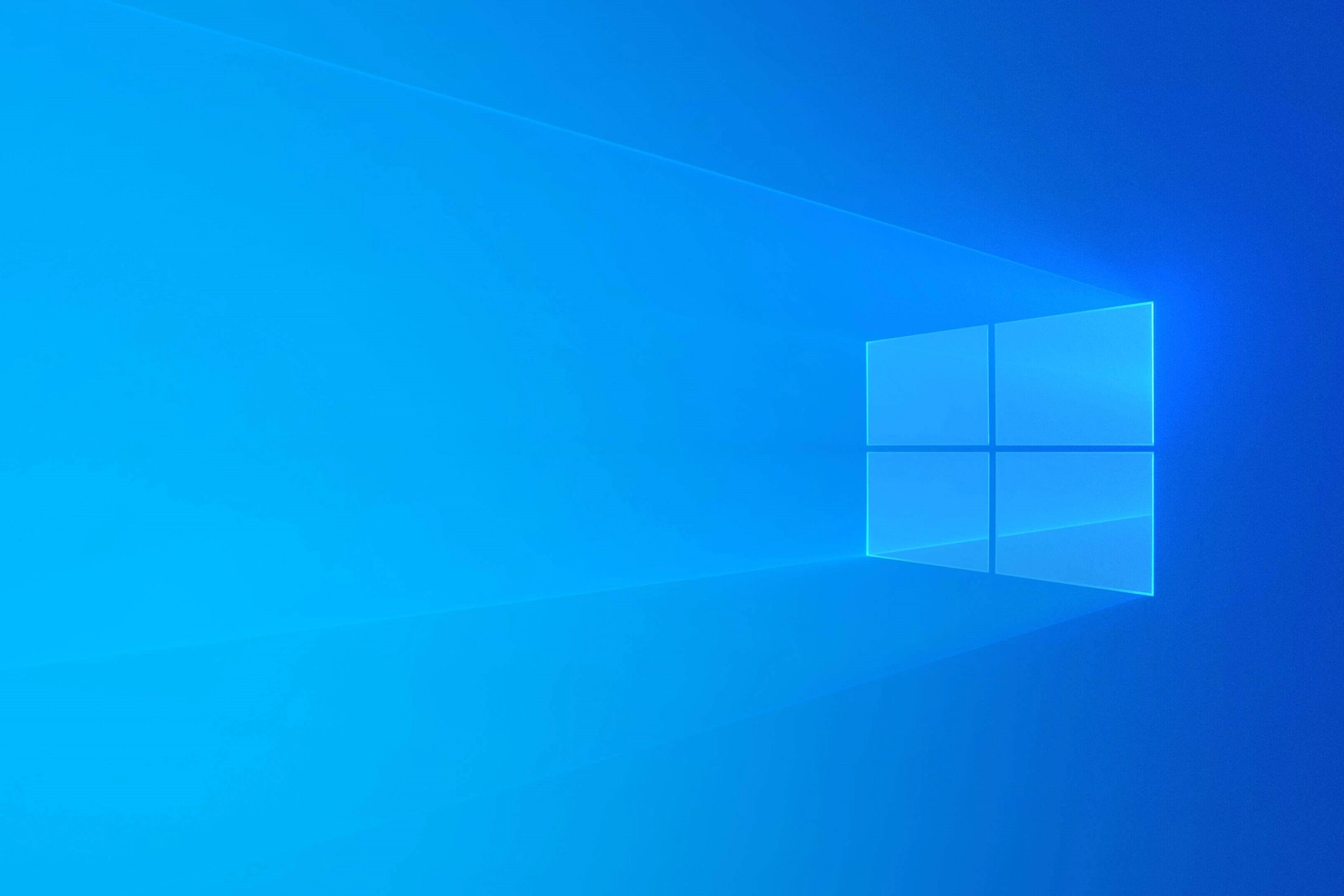I’ll probably put windows enterprise iot lts on a vm in case I ever need to use a windows computer.
deleted by creator
With the different distros of Linux, do different things support different distros? Like Zoom is support on Arch but not Mint, and Steam is supported in Mint but not Arch; or if an app supports Linux, it is on all distros? And if there is differences, do you have different partitions for different types of Linux?
All distros are equivalent, as far as software is concerned. They all have access to the same open source software, and Flatpak; AppImage; and Snap can be used for extra portability.
Think of a distro like a pre-configured image of linux. You can always change the configuration later, if you desire. For example, the Desktop Environment. All you have to do is just install a different DE package (usually via command line)
The DE has a major impact on user experience. Use KDE plasma for a more windows-familiar experience, or Gnome for a more Mac-familiar experience. Or experiment with others
The Linux Experiment is a good resource
Distributions are all of the same operating system, they differ in the set of applications and installation management tools. Except for those with different libc than glibc, things will generally work everywhere. Maybe with some effort.
When an app supports linux, it can do so by either:
- packaging it for popular distro repositories,
- giving instructions on how to build the app from the source code
or
- package it on distro-agnostic, package management solutions like flatpak or appImage.
These last ones are sandboxed environments. That means they have their own dependencies isolated from your system, so they dont have to deal with every distros pecularities at the cost of using more storage space. This is very useful for developers and in your case benefitial for the user because you can have both steam and zoom via flatpak on mint, arch or any obscure distro that has flatpak available, without any major problems.
Edit: Formatting
Yup. The big downside to flatpak is that, as you said, it takes up more space.
To make a Windows comparison, imagine needing to install Java separately for every single program that needs it. Flatpaks tend to be orders of magnitude larger than technically necessary, simply because they’re sandboxed and come with everything they need to run, even if you already have it installed.
imagine needing to install Java separately for every single program that needs it
Isn’t that pretty close to what already happens though? With all of the different versions of java, different companies packaging up their special versions of OpenJDK, I’ve got quite a few different java versions on my computer plus I’m pretty sure I’ve seen some software just package their own Java binary with the software presumably to limit Java version mismatches
Still waiting for Fedora to get VR support
A better use case for linux desktop could not have been invented.
Thought about it… but drivers are hell…
Linux has drivers baked in to the kernel or is a dependency smth doesn’t work try another distro or install nvidia non free driver
You just download them, like with windows?
If you’ve never downloaded drivers manually it’s super easy these days. You’ll get a tool from the device manufacturer that checks your hardware and system and automatically installs the correct driver with computer restarts at the correct places. You just press the go button.
That said most default drivers are open source and included in Linux, so you should be able to get by without downloading anything unless you need the latest manufacturer driver.
I never had to download drivers on linux but most manufacture driver install softwares are always for Windows. Except for like AMD
That’s definitely an issue. I checked my printer today and it has Linux drivers ready to go. And everything else is ASUS/AMD/Corsair. And I really don’t care if the RGB in my mechanical keyboard works.
Does that count also for graphic cards?
AMD for sure, with NVIDIA your mileage may vary. I’d go check their site but I’d be very surprised if they were behind the times on driver update tools. The drivers can make a huge difference in games so usually they’re on top of that.
So heres the Thing. My graphic card is from AMD
You’ll not have to download anything then, AMD drivers are baked in. You’ll literally be able to boot your OS for the first time, install a game and it’ll get full performance off the bat
This is AMDs page. Honestly I have more faith in AMD than NVIDIA these days.
Hm. Gonna dig a bit into that
You usually don’t need to download drivers in Linux, unless you want to use some really special hardware
They havent been since 10 years ago. Nvidia excempted.
Are they?
15 years ago it was a nightmare with WiFi card drivers, these days I haven’t had a single issue.
Nope I haven’t had trouble with drivers in a while. Printers are still probably thr worst but not bad.
deleted by creator
Can confirm. Works on every distro I’ve tried.
That’s what I have, except networked. . Works fine. Just meant out of all the things, printers are still the hardest
These days IPP Print Everywhere support makes driverless printing easy
I’ve been using Linux at home for a decade now and have never needed to install a driver.
Old hardware is usually very well supported.
Just don’t recommend Linux people with Nvidia hybrid graphics, though.
I have an old Steam Machine (Asus GR6) with Optimus graphics and it worked well enough. It’s been relegated to home server role for many years now but even then it wasn’t so bad to set up.
Exactly the issue I had on my laptop. Plug in an external display to extend the desktop and the laptop screen turns off. Wasted 6 hours of my life trying to get the damn thing to work properly until I gave up.
Only 6 hours
I’ve been changing colors and and textures in my desktop for longer spans of time
And playing CK2
Still, those are at least pleasant.
Not to dog pile, but unless it’s some niche hardware drivers are the last thing that springs to mind on my Linux boxes.
I will say the Linux volunteers have a slight blind spot for creative workflows.
I have installed Linux on a dozen computers from crummy laptops to custom build with graphics card. Most went fine. For the graphics card one, I installed popos to avoid learning about internals , but I could have spent time to solve it, I was lazy.
But I recommend having several distros on usb to do tests . That way things are easiest. Some installs have default settings that work best for random computers. So just spend a few minutes on each to test sound, WiFi and graphics. 5 minutes on each to test 10 flavors
No need to mess with any text settings at all these days… I mean, you can
Can’t wait! Cheap linux laptops are abound!
Prices of Windows 11 incompatible hardware have been dropping like a rock all year as companies upgrade their fleets, and it’ll get far more pronounced once consumers start getting squeezed to upgrade to continue using software XYZ
7th gen Intel laptops with GPUs are already really cheap
If I were to buy used laptop, I’d want 8th gen or newer because that’s where intel finally made more than dual core for mobile.
I literally daily drive a laptop with a 4c/8t processor (6700-HQ) so I’m not sure what you’re talking about other than perhaps the lower end i5s
Edit to add, my other laptop with a third gen i5 is 2C/4T and getting pretty long in the tooth though, so I wouldn’t go out of my way for something that old though
I mean mainstream processors of that age. Even regular i7s of 7th gen were just dual cores with HT.
I was very confused by your comment so I took a poke around Intel ark. I see what you mean now, most mobile processors for 4th and 6th gen (probably the most common generations for used PCs that are incompatible with 11) have 2c/4t on the U series processors, but looks like any HQ processor gets a full 4 cores and if it’s an i7 it gets hyper threading, putting them closer to parity with their desktop counterparts
Yep, I meant U series, which (at least where I live) were covering vast majority of the market. There was occasional HQ here and there, but not that often. AMDs offerings at the time were mediocre and nobody really used them so for me, that era basically overlaps with Intel U series hegemony when speaking about laptop cpus.
Yeah I hadn’t realized how much laptops from that era sucked compared to now. Granted, that was around the time manufacturers actually started actually trying to make laptops better, but really only current laptops feel similar to desktops and even then because they’re just designed to “race to sleep” any kind of workload that actually pushes them for more than 15 seconds at all it falls over so quickly compared to a moderate desktop.
Desktops with 4th gen and newer chips however have so much life left in them, so it’s an absolute crime that Microsoft’s sending them to the metalchipper
Unfortunately when there’s 11 will install on an 8th as long as it has a TPM.
Ah, so there won’t be overflow of big bussiness 8th gen laptops… Nevermind, I’d still avoid 7th gen myself.
11 losses support for 7th gen or earlier and non-TPM enabled equipment.
You might still be able to find something newer that lacks TPM.
Alternatively, we don’t really know why they chose 7th gen as the cutoff for sure. It is quite possible that they’re just going by Intel’s own support structure. Until dropped support for 7th gen due to an age out scenario so it’s absolutely possible that in another couple of years still drop support for 8th gen.
Hopefully instead of turning into a bunch of e-waste, a bunch of “useless” desktops flood refurbishers, and refurbished desktops become even cheaper. I wouldn’t mind replacing my dying media server.
My biggest worry for this is, there’s probably dozens of black hats out there that have found some very large exploit for Windows 10, and are holding off on abusing it until the day Microsoft ends support.
Currently, my plan is to make a partition for Linux Mint, set up dual boot, see how much of my daily computer obsession I can execute through there, and then try to slowly transition while slowly moving stuff from Windows. (I am vaguely worried I’ll run into that Windows issue where files accessed from outside the OS login are security-restricted. That has even screwed up my Windows reformat fixes)
Mint’s sweet I switched from 10 a few months back. Biggest difference is getting use to the different file system, only 2 games have been unplayable (didn’t try to make them work tbh).
NTFS file reading and writing is reasonably well supported under Linux, though exFAT or native filesystems are preferable. Actually finding software that will understand your files is one level removed, and getting equivalent or even the same software running is another level still. e.g. reading MS Office documents - LibreOffice is pretty good at that. For games, Steam and Proton have a lot of that covered.
If all you do is on websites, most if not all of the usual web browsers are available and work indistinguishably.
That said, I will leave you with these three words: Backups. Backups. Backups.
I’m not worried about interpreting the NTFS filesystem or individual files of given formats. Mainly, I’m worried about a Windows security-level problem I’ve had where Windows restricts access to whole directories based on user-level permissions, since the old “user” that owned them on a given operating system has been obliterated. It’s an issue I’ve had even when reinstalling Windows to the same computer.
As far as I know, Linux ignores NTFS permissions when given raw access to a disk, or rather, acts as thought it’s SYSTEM or some other high-level user, working around anything Windows might have set.
Worst case, you could still move your important files to an exFAT partition (or into an archive) where permissions don’t apply.
As far as I know, Linux ignores NTFS permissions when given raw access to a disk, or rather, acts as thought it’s SYSTEM or some other high-level user, working around anything Windows might have set.
I think that was the case for ntfs-3g.
I’m not certain that’s the case anymore with the new kernel NTFS driver, though I havent tested it. If it isn’t, it should be correctly handling the file premissions.
LMDE6 still uses ntfs-3g as far as I can tell, so I’m going to assume that regular Mint does too.
lsmodreports nothing like ntfs, and the tried and tested, if no longer developed, ntfs-3g suite is installed.Things might change as and when the kernel driver is more stable for writing. I’m sure more bleeding-edge distros are already running the kernel driver, but then, those who run those distros are deep into Linux and NTFS is not really something they deal with regularly.
I believe it actually is used in regular Mint (the Debian kernel doesn’t include it, but it looks like Ubuntu’s and Mint’s do). But yes, I suppose it is still in the process of being adopted by various distributions.
PR nightmares will keep significant exploit fixes coming. Microsoft isn’t that stupid.
might be better to separate drives, windows has been known to fuck up Linux partitions recently.
True once the day comes you can possibly do a raid config
This sounds like something I should be wary of, but it’s the first I’m hearing of it. Any other info?
only anecdotes unfortunately.
I haven’t booted into Windows since
Microsoft took a big bite out of GRUB, which is the utility that your motherboard uses to dual boot OSes. A Windows update basically borked it and set Windows as the mandatory default OS. It basically makes it so your motherboard can’t properly identify your Linux install(s).
Luckily, you can fix it directly in Windows Command Prompt. But still, it’s a dirty trick that Microsoft has been using recently. Windows has historically been a bad neighbor for other OSes, (for instance, the Secure Boot Module is basically an attempt to make booting other OSes difficult,) but this was the first time in recent history that they have outright prevented another existing OS from booting.
It typically happens during updates. People have reported their grub screwing up. If you’re able I would honestly suggest separate drives
Just keep regular full system images (as you should be anyways, as part of your 3-2-1 backup plan), and you’ll be fine as you can just restore an image if everything gets broken.
My what now?
I’ll switch my windows drive to the LTSC IoT version, when this happens. The only reason I have dual boot is for a fallback, if some games make trouble. For example for whatever reason BG3 multiplayer freezes randomly on linux. Single player is fine though. So until I got that sorted out I can fall back to windows. But when even the LTSC support runs out, then that’s it completely for me.
Yep. Dual booting LTSC and Linux here.
I need to get a bootloader working though. I’ve just been defaulting to Windows for a few months. But I want to spend more time on Linux.
I’m probably one of the last people who use Win 8.1. The only thing I use there is Smart Switch to back up my phone. For everything else, there is Mint. I’ll keep up with that setup until my hardware fails.
This sucks for me. I have to install Windows 11 on my other hardrive for work. I daily drive Linux.
It’s hell. But at least you can dial boot the damn thing.
work is work
I’d get a whole second machine and a KVM switch, it would save you much trouble
That is actually a great idea.
every few years on Linux Discord groups across the internet
“Hi, Windows just stopped support, you guys got any suggestions?”
“You should definitely try LFS, it’s great and you’ll have exactly what you want!”
“Arch btw! Customize everything and no bloat, hurr durr!”
“NixOS is the future, go for it!”
True, i daily drived arch for 8 years and argued with one who advised arch to windows refugees, some people seriously think that arch is good for people who haven’t used true Linux not one bit in their lives
This shit is what kept me from making the jump for a long time, the hardcores just don’t know how hardcore they are and think the average person can just pick something like that up in an afternoon.
These who don’t know how hardcore they are, don’t touch grass, in short they are basement dwellers that residing in online echo chambers, i mean, i was daily driving arch for 8 years and i know i was hardcore one because i am going to university and working on a job, i mean i am seeing people and comparing myself to them, and those who seriously thinking that everyone can pick up linux in an afternoon, these people not having enough socialisation that’s for sure
Mint
I’m really excited for when the health authority I’m working for that uses win10 needs to frantically switch every machine to win11… Going to be such a relaxing time
/s
You’re using a consumer version of Windows? Businesses can pay for extended support.
Oh true, forgot about that. In that case we won’t think about it for a few years I’m sure…
I’ve suggested we modify a Linux distro to use instead, but no one seems to want to pay for the setup. Which is fair I guess.
No worries, I was genuinely asking. My gf works at a ~€10b multinational engineering corpo and they use what seems to be a consumer version (it has ads!). I work for a different corpo and we have LTSC version so big features come later once properly tested.
I’d rather pay for security updates than invite more AI and Microsoft sponsored spyware onto my computer…
So, could users just ignore that and just buy an anti-virus product or use 0patch? If it’s like Widows 8, most apps will still be updated for a few years.
The most important thing to get updates in the browser tbh. That’s the source of nearly everything bad these days, and the main reason somebody would bother to update their PC.
I reckon they’ll continue providing updates for those for as long as there’s enough people using it. It’s not like Google are going to willing turn round and go “whelp, no more adverts and spying for these millions of users!”
And enable a strict firewall
Generally speaking that’s ill-advised, antimalware tools rely on heuristics and active samples.
You don’t wanna be the first person to get xyz virus. It’s certainly better than nothing though.
Unless you have an app you can’t live without Linux is the most accessible than it ever has been.
As a heavy user of Playit Live, Excel with macros and Google Drive, I’m stuck in a Windows World for a while yet. The first two could maybe run in Boxes if I send the audio to a USB device.





















